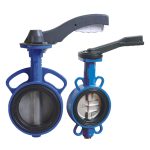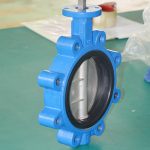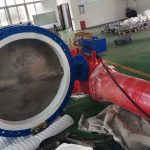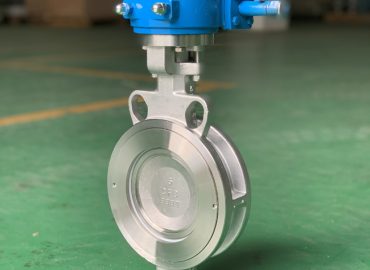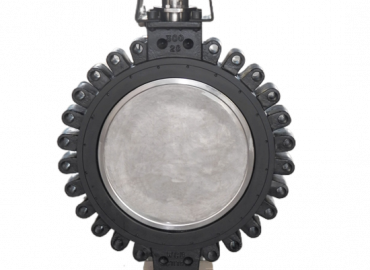In an era where efficiency and precision are paramount, the significance of flow control cannot be overstated, particularly in industries such as oil and gas, water treatment, and chemical processing. At the heart of this flow control lies butterfly valve technology, a critical component that has seen remarkable innovation and advancement over the years. This post will delve into the transformative journey of butterfly valves, from their traditional designs to the latest technological breakthroughs that have propelled their performance to new heights. We’ll explore how these innovations have not only improved flow control but also significantly boosted operational efficiency, paving the way for more sustainable and cost-effective industrial processes.
Introduction
As the industrial world continues to evolve, so too does the technology that underpins it. A prime example is butterfly valve technology, which has seen significant advancements in recent years, transforming how industries control fluid flow for improved operational efficiency. New innovations in butterfly valve design have resulted in valves that not only regulate fluid flow more effectively but also reduce energy loss and maintain system pressure, thereby enhancing overall system efficiency (source: povbutterflyvalve.com). The evolution of these valves is driven by continuous advances in research and development, leading to the creation of high-performance butterfly valves that are both energy-efficient and reliable. These valves are specifically designed for high flow applications like HVAC systems, where they offer an intelligent solution that combines ease of installation with optimal performance (source: belimo.com). Furthermore, the industry is witnessing a shift towards the use of advanced materials, coatings, and sealing technologies in the manufacture of butterfly valves, leading to the creation of more durable and efficient products (source: globenewswire.com). This ongoing innovation in butterfly valve technology is not just improving flow control and efficiency but also contributing to the reduction of greenhouse gas emissions, demonstrating the role this technology plays in promoting sustainability (source: valmet.com). As such, the future of butterfly valve technology promises even greater advancements, with the potential to revolutionize a wide range of industries.
Brief explanation of butterfly valves and their importance in flow control.
Butterfly valves are crucial components in the regulation of fluid flow across various industries. These devices belong to the quarter-turn rotational motion valve family and are primarily used to start, stop, or control fluid flow. The design of a butterfly valve includes a metallic disc that rotates a quarter-turn to regulate the flow of fluids within a pipeline . Their key importance lies in their effective design, relatively low cost, and the ability to rapidly control flow, making them one of the best types of valves for managing fluid flow . However, it’s important to note that their application can be limited as part of the disc always faces the flow, even when fully open. Despite this, their advantages in providing better flow control are significant, making butterfly valves an integral part of flow management systems.
A short overview of the problems with traditional butterfly valves.
Traditional wafer butterfly valve, while widely used for their simplicity and cost-effectiveness, have long been associated with certain drawbacks that can impact their overall performance and efficiency. Firstly, they are often prone to leakage, particularly when dealing with high-pressure systems, which can lead to wastage and increased operational costs. Secondly, the wear and tear on the sealing materials caused by constant friction during operation can reduce the lifespan of these valves, necessitating frequent replacements and maintenance. Furthermore, traditional butterfly valves are not typically suited for handling abrasive or corrosive fluids, limiting their applicability across different industries. Lastly, they lack the precision and control required for more complex flow control applications, making them less efficient in scenarios demanding exact flow regulation. These limitations have spurred the need for innovations and advancements in butterfly valve technology.

Historical Overview
Tracing the arc of history provides us with a comprehensive understanding of the evolution of societies, civilizations, and the human race as a whole. From the first signs of human life in Africa, through the rise and fall of ancient civilizations such as Egypt, Greece, and Rome, to the Dark Ages and Renaissance in Europe, each era has left indelible marks on the fabric of time. The Age of Exploration opened up new continents for colonization, leading to significant cultural exchanges, but also to devastating conflicts and exploitation. The Industrial Revolution heralded an era of unprecedented technological advancements, transforming economies and societies in ways previously unimaginable. The 20th century, marked by two World Wars, witnessed the rise of new superpowers and the decolonization of many nations, setting the stage for a new world order. The advent of the digital age in recent decades has further accelerated changes, shrinking our world into a global village. This historical overview, while not exhaustive, underscores the intricate tapestry of human history, reminding us that our present is deeply rooted in our past, and our future will be a reflection of our current actions and choices.
A brief history of butterfly valves, from their inception to the present day.
The history of butterfly valves dates back to the late 18th century when they were first used in fire sprinkler systems. However, it wasn’t until the mid-20th century, around the 1930s and 1940s, that butterfly valves began to be widely recognized and utilized in various industrial applications. The initial design was quite simple, featuring a disc mounted on a rotating shaft. When the valve is fully opened, the disc aligns with the direction of the flow, allowing fluid to pass through. Conversely, when the valve is closed, the disc is perpendicular to the flow, thus blocking it. Over time, the design of butterfly valves has significantly evolved, with improvements in materials, shape, and sealing mechanisms. Today, we have high-performance butterfly valves made from durable materials like stainless steel and designed with advanced sealing technologies for improved flow control and efficiency. These modern valves are used across a multitude of industries, from water treatment to oil and gas, due to their reliability, cost-effectiveness, and versatility.
Discussion on how the technology has evolved over time.
Butterfly valve technology has evolved significantly over the years to overcome the limitations of traditional designs and meet the increasing demands of various industries. Initially, butterfly valves were simple on-off regulating devices with a basic disc and seal design. However, their inability to handle high-pressure applications or provide precise control led to the development of high-performance butterfly valves. These newer models introduced an offset design where the disc is positioned away from the center, allowing it to gradually engage with the seat and create a tighter seal. This innovation not only improved leak resistance but also allowed for better flow control (source: craneengineering.net). Additionally, advancements in materials science have led to the use of more durable materials and coatings that can withstand harsh conditions, thereby extending the lifespan of the valves. In recent years, digital technology has also been incorporated into butterfly valve systems, enabling remote control, real-time monitoring, and predictive maintenance, which greatly enhances operational efficiency (source: emerson.com). These technological evolutions have transformed butterfly valves from simple mechanical devices to sophisticated components of modern industrial systems.
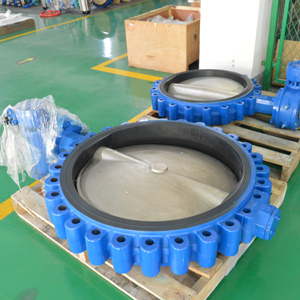
Recent Advances in Butterfly Valve Technology
In recent years, lug butterfly valve technology has seen significant advancements that have enhanced their efficiency, reliability, and applicability across diverse industries. Joanne Lunsford, mentioned in an article on Emerson Automation Experts, highlights how newer designs enable butterfly valves to handle higher pressures and temperatures while providing tighter shutoffs. This evolution is largely due to continuous research and development in butterfly valve design technologies and the use of new materials, as reported by PI Process Instrumentation. One such innovation is the rotary types of control valves that have been increasingly used over the past 40 years as alternatives to globe-style valves, contributing to the transformation of the market, according to a blog post by ISA.
A standout example of these technological strides is Belimo’s advanced butterfly valve and actuator assembly, described as the most intelligent, energy efficient, and reliable high flow solution in the market. This newly designed valve leans on field-proven technologies but also offers new functionalities, making it a versatile solution for various applications, as detailed by Valmet and Tower Equipment Co. Moreover, the growth and advancements in the oil and gas industry are expected to create promising opportunities for the butterfly valves market, suggesting a bright future for this technology. These developments collectively indicate a dynamic shift in butterfly valve technology, setting new performance standards in HVAC applications and beyond.
Description of the latest innovations in butterfly valve technology.
The butterfly valve technology has seen several innovative advancements in recent years aimed at improving performance, durability, and efficiency. One of the most notable innovations is the introduction of the triple offset design, which eliminates the friction between the disc and the seat, significantly reducing wear and tear and extending the valve’s lifespan. Another noteworthy development is the use of advanced materials such as reinforced polymers and high-performance alloys, which can withstand extreme temperatures and corrosive environments, making the valves more robust and versatile. Additionally, the integration of digital technology has led to the development of smart butterfly valves. These valves are equipped with sensors and connectivity features that allow for real-time monitoring of valve performance and remote control, enhancing operational efficiency and predictive maintenance capabilities. Furthermore, the advent of 3D printing technology has started to influence butterfly valve manufacturing, allowing for more complex designs and rapid prototyping, reducing costs, and speeding up production times. These innovations have greatly expanded the applications of butterfly valves across various industries, from oil and gas to pharmaceuticals and food processing.
How these advances have improved flow control and efficiency.
The advancements in butterfly valve technology have greatly improved flow control and operational efficiency. The development of high-performance butterfly valves, with their offset disc design, has enabled more precise control over fluid flow. The disc’s off-center position allows it to engage gradually with the seat as the valve closes, creating a tighter seal and reducing the chances of leakage. This means that flow rates can be adjusted more accurately, enhancing process control in various industrial applications. Additionally, the use of more durable materials extends the life of the valves, reducing the need for frequent replacements and thereby lowering maintenance costs. Perhaps one of the most impactful advances is the integration of digital technology. With features like remote control and real-time monitoring, operators can manage systems more effectively and respond promptly to any issues, minimizing downtime. Predictive maintenance capabilities also allow potential problems to be identified and addressed before they cause system failures, further boosting efficiency. These technological improvements have not only optimized flow control but also enhanced overall operational efficiency, making modern butterfly valves an indispensable component in many industries.

Triple Offset Butterfly Valves
Triple Offset Butterfly Valves are a specialized type of butterfly valve that feature three distinct offsets to achieve a bubble-tight shut-off, eliminating any rubbing action of the sealing elements during the 90 degrees of rotation. The first two offsets pertain to the position of the stem in relation to the butterfly valve’s center-line, both on the X and Y axis. The third offset applies to the location of the valve itself, which is designed to ensure zero leakage on metal-to-metal contact, thereby improving the valve’s efficiency and durability. These valves are available in a variety of special materials, including Aluminum Bronze, Duplex SS, Super Duplex, Inconels, Incoloys, etc., making them suitable for a range of industrial applications. Leading companies like Bray, Flowserve, and Deltat produce a comprehensive portfolio of Triple Offset Butterfly Valves, highlighting their significance in the flow control industry.
Explanation of what triple offset butterfly valves are and how they work.
Triple offset butterfly valves are a unique type of butterfly valve specifically engineered to rectify the shortcomings of other butterfly valve types. The term “triple offset” refers to the three separate offsets incorporated into these valves. Firstly, two of these offsets relate to the location of the shaft concerning the centerline of the bore, which enhances sealing and reduces wear during operation. The third offset is the geometry of the sealing surface, which is not parallel to the direction of flow, creating a cam action during operation and eliminating friction during sealing and unsealing. This design allows for zero leakage on metal-to-metal contact, as the hard-facing seat eliminates rubbing between the seat and the disc during operation. Furthermore, triple offset butterfly valves have a low torque, meaning they do not require larger, more expensive actuators, thus resulting in cost savings. In essence, triple offset butterfly valves provide a more efficient and cost-effective solution for flow control in various industrial applications.
Discussion on the advantages they provide over traditional butterfly valves.
The latest innovations in butterfly valve technology provide several advantages over traditional butterfly valves. Traditional valves often face challenges such as wear and tear due to friction, difficulty in handling extreme temperatures or corrosive environments, and lack of real-time monitoring capabilities. However, with the introduction of triple offset designs, the friction between the disc and the seat is virtually eliminated, significantly reducing wear and tear and extending the valve’s lifespan. The use of advanced materials like reinforced polymers and high-performance alloys makes these new-age valves more robust and versatile, able to withstand extreme conditions. The integration of digital technology has enabled the creation of smart butterfly valves, equipped with sensors and connectivity features that allow for real-time monitoring and remote control. This not only increases operational efficiency but also enhances predictive maintenance capabilities, reducing downtime and maintenance costs. Moreover, with the advent of 3D printing technology, manufacturers can now create more complex designs and rapidly prototype, reducing production costs and speeding up delivery times. These advanced butterfly valves, therefore, offer improved performance, longevity, versatility, and cost-effectiveness compared to their traditional counterparts.
High-Performance Butterfly Valves
High-performance butterfly valves represent a significant advancement in flow control technology. They are designed to handle higher pressures and temperatures compared to traditional butterfly valves, making them suitable for a wider range of industrial applications. These valves typically feature a double offset or even triple offset disc design, which reduces friction between the disc and the seat during operation. This not only ensures a tighter seal and better shutoff capabilities but also extends the valve’s lifespan by minimizing wear and tear. The use of advanced materials like reinforced polymers and high-grade alloys in their construction further enhances their durability and ability to withstand harsh operating conditions. High-performance butterfly valves are also often equipped with actuator assemblies, enabling automated operation and precise control over fluid flow. Their robust design, versatility, and superior performance make high-performance butterfly valves a preferred choice in industries such as oil and gas, chemical processing, and power generation.
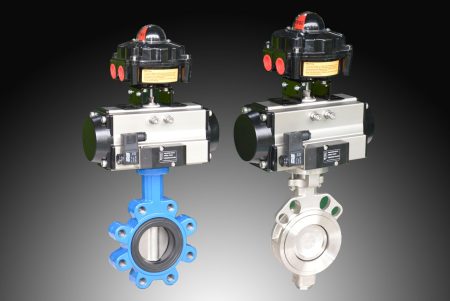
Explanation of what high-performance butterfly valves are and how they work.
High-performance butterfly valves, also known as double offset butterfly valves, are a specialized type of butterfly valve designed for more demanding applications. These valves incorporate a disc that is offset from the seat center, which is why they are referred to as “double offset”. The unique offset design allows the disc to move off the seat without scraping against it, reducing wear and extending the valve’s lifespan. Unlike general service butterfly valves, high-performance butterfly valves are constructed with materials less susceptible to erosion, such as carbon steel or 316 stainless steel, enhancing their durability. They are designed to handle various applications, from general services to throttling control. The line pressure in these valves exerts an upward force on the seat, causing it to press against the valve disc, creating a tighter seal as the pressure increases. This makes them well-suited for controlling flow in commercial, industrial, and mechanical HVAC services. High-performance butterfly valves offer many advantages over traditional valve types, making them an ideal choice for a variety of applications.
Discussion on the benefits they offer in terms of efficiency and reliability.
Triple offset butterfly valves offer numerous benefits in terms of efficiency and reliability. Firstly, their unique design eliminates the friction between the disc and the seat during operation, reducing wear and tear and extending the valve’s lifespan. This zero-rubbing action not only lowers maintenance costs but also ensures a bubble-tight seal, enhancing efficiency by preventing leakage. Secondly, they are capable of handling high-pressure and high-temperature applications, making them highly reliable in demanding industrial environments. They also have a low torque operation, which means they require less energy to operate and can function effectively with smaller, less expensive actuators. Finally, the triple offset design allows for bi-directional operation, giving them the versatility to control flow in both directions. These features combined make triple offset butterfly valves an efficient and reliable solution for flow control in various industries.
Intelligent Butterfly Valves
Intelligent butterfly valves are a cutting-edge evolution in valve technology, leveraging the power of digitalization to enhance their functionality and efficiency. These smart valves are equipped with embedded sensors and connectivity features that allow for real-time monitoring and remote control of the valve operations. They can communicate data about the valve’s position, pressure, temperature, and flow rate, enabling operators to make informed decisions based on real-time information. In addition, intelligent butterfly valves often incorporate predictive maintenance capabilities. By analyzing the collected data, these valves can predict potential failures or malfunctions before they occur, allowing for timely intervention and reducing downtime. Furthermore, some intelligent butterfly valves offer automated operation, adjusting the flow rate in response to changes in system parameters automatically. This not only enhances operational efficiency but also leads to significant cost savings over time. Intelligent butterfly valves, therefore, represent a significant leap forward in optimizing flow control in various industries.
Explanation of what intelligent butterfly valves are and how they work.
Intelligent butterfly valves represent the latest advancement in flow control technology. These sophisticated valves incorporate smart features and connectivity for enhanced control, efficiency, and reliability. An intelligent butterfly valve typically consists of a rotating disc or obturator, which can be adjusted to varying degrees to regulate fluid flow, just like traditional butterfly valves. What sets intelligent butterfly valves apart is their ability to absorb and control inputs from various sources such as positioners or solenoid valves, providing angular displacement proportional to the input current. Furthermore, these valves are often coupled with advanced actuator assemblies, making them highly energy efficient and reliable, especially in high-flow applications. Some intelligent butterfly valves even integrate unique control features, offering a new way to operate and control a valve. The integration of such smart features allows for real-time monitoring and automated control, significantly enhancing operational efficiency and predictive maintenance capabilities.
Discussion on how they leverage smart technology and automation for enhanced flow control.
The integration of smart technology and automation into high-performance butterfly valves has greatly enhanced flow control operations. These advanced valves can be equipped with automated actuators, which can be controlled remotely or programmed to respond to specific conditions. This allows for more precise control over fluid flow, enabling operators to regulate the valve’s opening and closing with greater accuracy and efficiency. Furthermore, by incorporating sensors and digital communication interfaces, these valves can transmit real-time data on their operational status, including pressure levels, temperature, and opening position. This information can be monitored and analyzed through a central control system, facilitating predictive maintenance and reducing the risk of unexpected shutdowns. Some high-performance butterfly valves even have self-regulating mechanisms that adjust the valve position in response to changes in flow or pressure, further optimizing the flow control process. The adoption of smart technology and automation therefore not only enhances the performance of these valves but also contributes to improved safety and productivity in various industrial applications.

Case Studies
Butterfly valve technology has seen significant advancements and innovations over the years, leading to improved flow control and efficiency. The introduction of high-performance butterfly valves, for instance, marked a significant leap in valve technology. Their double offset design reduces friction between the disc and the seat, enhancing durability and reducing maintenance costs. One case study that illustrates this innovation is the deployment of high-performance butterfly valves in a large petroleum refinery. The valves were used to control the flow of crude oil and other petrochemicals. Despite the harsh operating conditions, the valves performed exceptionally well, maintaining tight seals and ensuring efficient operations.
The advent of triple offset butterfly valves represents another major innovation in this field. These valves, with their unique triple offset design, provide a bubble-tight seal, eliminating any leakage and further improving efficiency. A water treatment plant in California provides an excellent case study of these valves in action. The plant replaced its aging gate valves with triple offset butterfly valves and saw immediate improvements. The new valves provided superior flow control, reduced water loss due to leakage, and decreased maintenance requirements, leading to substantial cost savings.
Another notable advancement has been the development of intelligent valve actuators. These devices use advanced sensors and software to monitor valve performance in real-time, allowing for predictive maintenance and even automatic adjustments to improve flow control and efficiency. A case study from a power generation facility in Germany highlights the benefits of this technology. The facility integrated intelligent valve actuators into its cooling system. The actuators’ ability to closely monitor and adjust valve positions led to significant improvements in system performance and efficiency, reducing energy consumption and lowering operational costs.
Lastly, the incorporation of advanced materials and manufacturing techniques has also led to significant improvements in butterfly valve technology. For example, the use of stainless steel and other corrosion-resistant materials has increased valve lifespan and reliability under harsh conditions. Additive manufacturing, or 3D printing, has also opened up new possibilities for custom valve designs that can be tailored to specific applications for optimal performance.
Overall, these innovations and advances in butterfly valve technology have led to significant improvements in flow control and efficiency across a variety of industries, from oil and gas to water treatment and power generation. They have enabled businesses to enhance their operations, reduce costs, and improve their environmental footprint.
Real-life examples of industries or companies that have benefited from these innovative butterfly valve technologies.
Innovative butterfly valve technologies have brought significant benefits to a wide range of industries. In the oil and gas industry, major companies like ExxonMobil and Royal Dutch Shell use high-performance butterfly valves in their pipelines and processing plants to handle the high pressures and temperatures associated with petroleum extraction and refining. These valves’ durability and reliability help minimize downtime and maintenance costs, contributing to more efficient operations. Similarly, in the water treatment sector, companies like Veolia and Suez have benefited from the precise flow control provided by triple offset butterfly valves, enhancing the effectiveness of their treatment processes. The pharmaceutical industry, including giants like Pfizer and Johnson & Johnson, has also seen the benefits of intelligent butterfly valves. Their ability to provide real-time data and predictive maintenance capabilities helps these companies meet stringent regulatory requirements for process control and product quality. Lastly, power generation companies, such as EDF and Duke Energy, use these advanced butterfly valves in their cooling systems and boilers to ensure efficient and safe operation. Thus, innovative butterfly valve technologies are proving invaluable across a diverse range of sectors.
Discussion on how these technologies have improved their operations and bottom line.
The implementation of intelligent butterfly valves has led to significant improvements in operations and bottom line for many industries. With their advanced features, these valves have enhanced operational efficiency by allowing for precise control of fluid flow and reducing energy consumption. Real-time monitoring capabilities have enabled companies to track valve performance continuously, leading to improved process control and quality. The predictive maintenance feature, capable of foreseeing potential failures or malfunctions, has reduced unexpected downtime and associated costs, thus improving plant reliability and productivity. Furthermore, the ability to remotely control these valves has reduced the need for on-site personnel, leading to cost savings in labor. Automation of valve operation has also minimized human errors, resulting in more consistent performance and product quality. Overall, the use of intelligent butterfly valves has resulted in improved operational efficiency, cost savings, and increased profitability, making them a valuable investment for businesses in various industries.

Future Trends in Butterfly Valve Technology
The future of butterfly valve technology is looking bright and dynamic, with several key trends set to shape the industry in the coming years. The butterfly valve market is expected to witness substantial growth, driven by factors such as advancements in technology and increasing demand for automation. The global butterfly valve market is projected to grow at a compound annual growth rate (CAGR) of 5.9% during the forecast period.
One trend that stands out is the increasing adoption of triple offset butterfly valves. These valves are known for their unique design that provides a bubble-tight seal, eliminating any leakage and improving efficiency. The global market size for these valves was valued at USD 619.4 million in 2022, and it’s expected to grow significantly in the near future.
Another trend shaping the future of butterfly valve technology is the integration of advanced materials and manufacturing techniques. The use of stainless steel and other corrosion-resistant materials has increased valve lifespan and reliability under harsh conditions. Additive manufacturing or 3D printing is opening up new possibilities for custom valve designs that can be tailored to specific applications for optimal performance.
A significant trend in the industry is the growing demand for intelligent valve actuators. These devices use advanced sensors and software to monitor valve performance in real-time, allowing for predictive maintenance and automatic adjustments to improve flow control and efficiency.
Lastly, the pricing of motorized butterfly valves has been subject to several trends in recent years, driven by factors such as technological advancements. As the industry continues to evolve, manufacturers are expected to focus on developing innovative solutions that offer high performance, safety, and reliability, while also being cost-effective.
Predictions and expectations for the future of butterfly valve technology.
Looking ahead, the future of butterfly valve technology seems set to be driven by continued innovation and digital transformation. One key trend is the increasing integration of Internet of Things (IoT) capabilities into valve systems. This could enable even more precise real-time monitoring and control of valve performance, potentially ushering in new levels of efficiency and reliability. AI-powered predictive maintenance algorithms are also likely to become more common, helping operators anticipate and address potential issues before they lead to system downtime. In terms of materials and design, we can expect ongoing advancements as well. For example, the use of advanced materials like graphene or nanocomposites could further enhance the durability and performance of butterfly valves under extreme conditions. Similarly, innovations in manufacturing techniques, such as 3D printing, could allow for more complex and tailor-made valve designs that offer improved flow control and efficiency. Furthermore, as sustainability becomes an ever more critical concern, the development of energy-efficient butterfly valve technologies will likely gain increased attention. Overall, the future of butterfly valve technology holds exciting possibilities for even greater performance, efficiency, and sustainability.
Discussion on how ongoing research and development could lead to even more advanced and efficient solutions.
Ongoing research and development are key to driving advancements in various fields, leading to more efficient and effective solutions. For instance, in the medical field, continuous R&D efforts have led to the development of new anticancer drugs and improved drug-eluting stents, as noted in studies published in ScienceDirect. These advancements have the potential to improve patient outcomes significantly. In the realm of career counseling, ongoing research is exploring virtual platforms to make career assessment and planning more accessible and scalable, as discussed in the Journal of Career Assessment. Similarly, researchers are leveraging technological innovations to bridge gaps in pediatric critical care in resource-limited settings, according to an article published in Frontiers in Pediatrics. The energy sector is also benefiting from ongoing R&D, with advancements in supercritical water-cooled reactors promising more efficient power generation, as outlined in a report on OSTI.gov. In agriculture, ongoing research is focused on developing automated systems for crop pest and disease detection, which could revolutionize farming practices and improve crop yields, as detailed in IEEE Xplore. Therefore, ongoing research and development activities across different sectors hold immense potential to bring about advanced and efficient solutions that can address current challenges and improve overall efficiency and effectiveness.
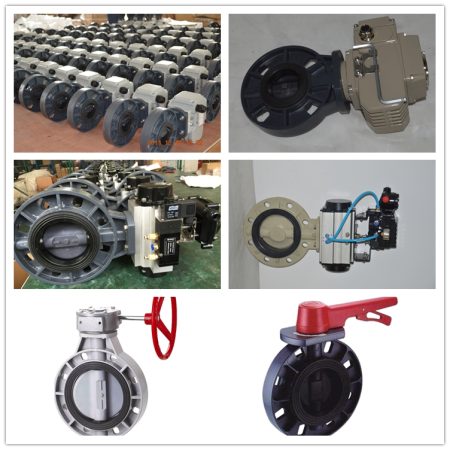
Conclusion
In conclusion, the world of butterfly valve technology is continuously evolving, with innovations and advances transforming the way industries manage flow control and efficiency. From high-performance butterfly valves that withstand extreme pressures and temperatures to triple offset valves offering precise control and reduced wear, these advancements are revolutionizing sectors like oil and gas, water treatment, pharmaceuticals, and power generation.
The advent of intelligent butterfly valves has been a game-changer, bringing real-time data monitoring, predictive maintenance capabilities, and remote control into the mix. These features have not only improved operational efficiency but also significantly impacted the bottom line by reducing energy consumption, minimizing downtime, cutting labor costs, and ensuring consistent product quality.
Looking ahead, the future of butterfly valve technology is promising. The market is projected to grow substantially, driven by a rising demand for automation and efficient flow control solutions. Developments like hydraulically controlled butterfly valves indicate a trend towards more multifunctional, high-performing, networked, and reliable valves. The integration of smart features for enhanced control and automation is also on the horizon, further pushing the boundaries of what’s possible with butterfly valves.
In a world where efficiency and control are paramount, these innovations in butterfly valve technology are more than just improvements; they’re essential tools paving the way for safer, more efficient, and more sustainable industrial operations. As we continue to explore and harness the potential of these advanced technologies, the butterfly valve’s role in shaping the industries of tomorrow becomes increasingly significant. Indeed, the future of flow control looks bright, and it’s exciting to see where these technological advancements will take us next.
Recap of the main points discussed in the blog post.
In this blog post, we explored the significant role and impact of butterfly valve technology in various industries. We discussed how intelligent butterfly valves have improved operational efficiency, reduced energy consumption, and minimized human errors, leading to cost savings and increased profitability. We also delved into the future trends shaping this industry, highlighting the growing demand for automation and efficient flow control solutions. The increasing adoption of triple offset butterfly valves, integration of advanced materials, use of 3D printing, and the emergence of intelligent valve actuators were identified as key trends. Finally, we touched on how these technological advancements are influencing the pricing of motorized butterfly valves. In conclusion, butterfly valve technology is a rapidly evolving field with promising prospects, driven by continuous innovation and the increasing need for smarter, more efficient solutions in industrial applications.
Final thoughts on the importance of innovation and advancement in butterfly valve technology for improved flow control and efficiency.
In conclusion, the importance of innovation and advancement in butterfly valve technology for improved flow control and efficiency cannot be overstated. As industries worldwide continue to evolve and demand more efficient and reliable systems, the role of advanced butterfly valves becomes increasingly crucial. The integration of new materials, sophisticated designs, and digital technologies like IoT and AI into these valves not only enhances their performance but also extends their lifespan and reliability. These innovations contribute significantly to reducing operational costs, improving safety, and minimizing environmental impact. In essence, the continuous evolution of butterfly valve technology is a key driver in meeting the ever-changing needs of various sectors, from oil and gas to water treatment, and plays a vital role in shaping a more sustainable and efficient industrial future.



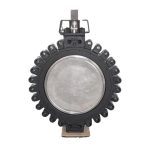
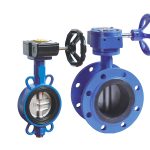

-150x150.jpg)
